
Barn Swallow
As of a few years ago, the list of birds seen on the Rockfish Valley Trail was at 187, including 60 breeding species, and 7 presumed breeding species (Rockfish Valley Trail species list). However, loss of habitat in adjacent properties has reduced the number of breeding species there by about 50%, or perhaps even more. As I will be moving to Crozet at the end of August, and probably will not spend much time on this trail after that, I wanted to see what breeding species I might see there this month.
There were a fair number of swallows on the trail. Tree Swallows use some of the bluebird boxes, and Barn Swallows are probably still breeding on or near the trail. Adult and juvenile Eastern Bluebirds are commonly seen there.

Barn Swallow
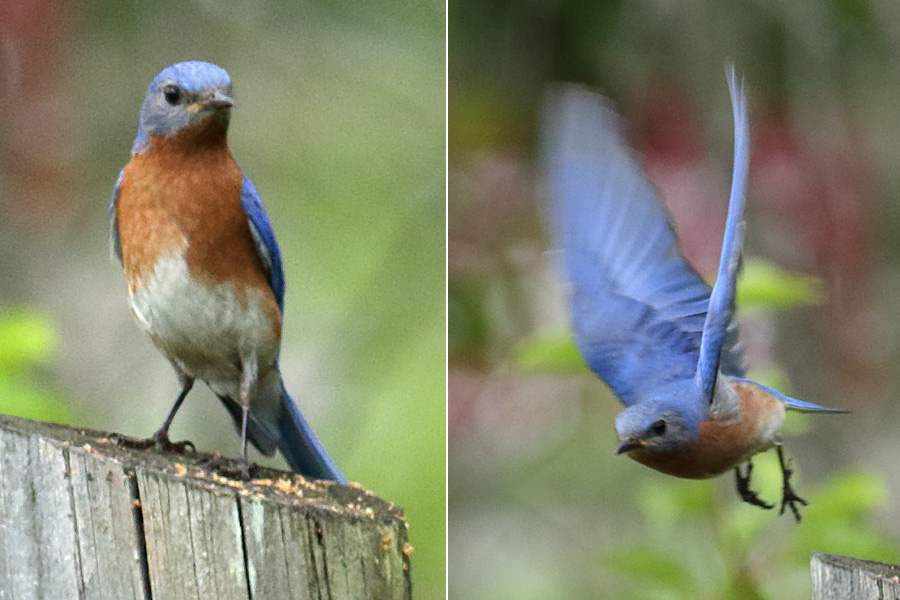
Eastern Bluebird
One of the more vocal breeding species on the trail is the Orchard Oriole, and males, females, and first year birds are easy to hear and see.
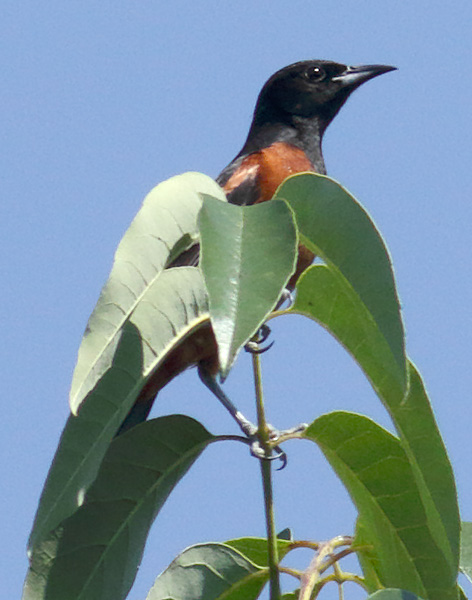
Male Orchard Oriole
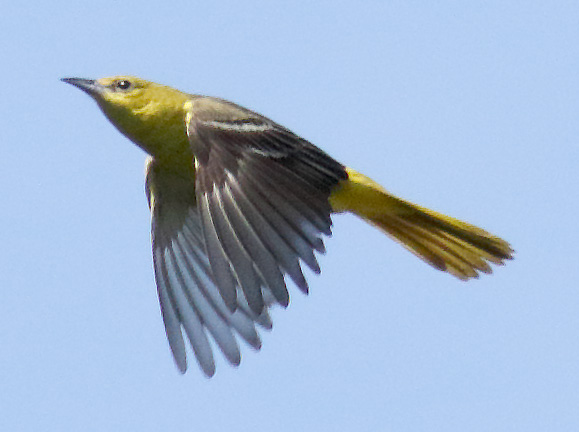
Female Orchard Oriole
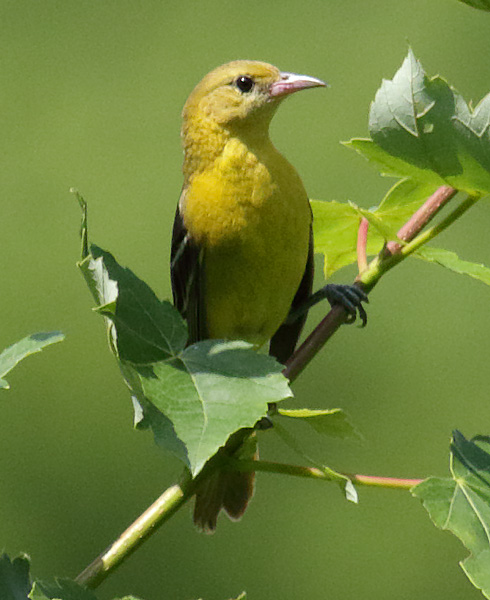
Female Orchard Oriole
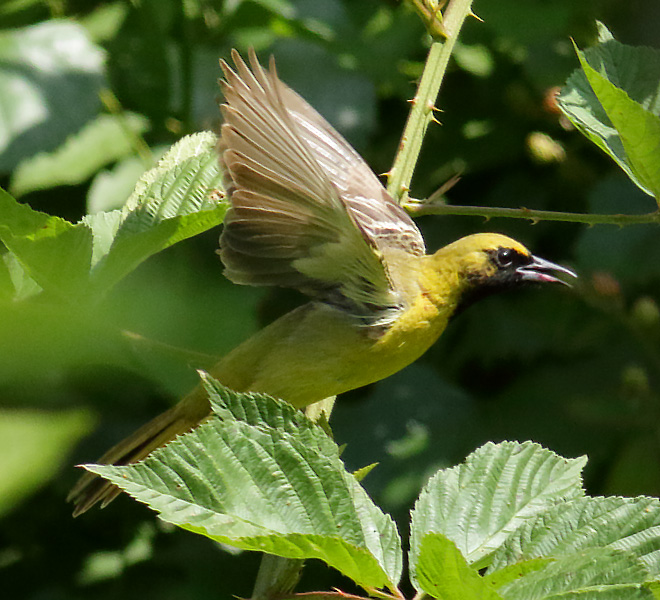
First year male Orchard Oriole
The only warbler species that are probably still breeding on the trail are Common Yellowthroats and Yellow-breasted Chats. I could hear Common Yellowthroats singing, and Yellow-breasted Chats making a lot of noise, although I cannot confirm their breeding on the trail this year. I have seen a couple of first summer male American Redstarts on the trail earlier this spring, so perhaps they are also breeding there. I saw what appears to be a young Red-winged Blackbird foraging with an adult female of that species.
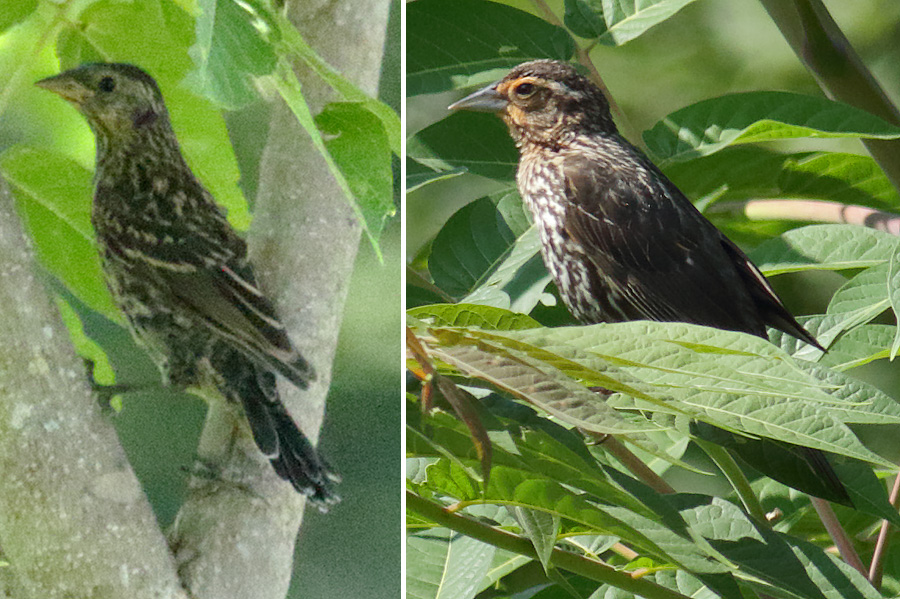
First year and adult female Red-winged Blackbirds
Starlings have used the Kestrel box every year since it was erected, and one was bringing food to the box this morning.
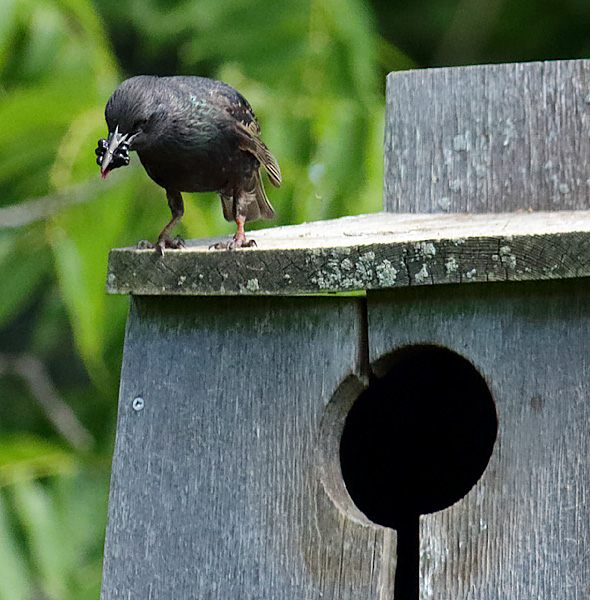
Starling
Field Sparrows have bred on the trail every year, and there are quite of few of them on the trail again this year.

Field Sparrow
The trail started to get busy with holiday visitors: joggers, children, and dog walkers, so I headed back towards my car and a young Great Blue Heron flew from the Rockfish River. I don't think that they are breeding on the trail, but there was a small rookery off of Adial Road a few years ago. It was destroyed in a storm, and perhaps a new one was built in the area.
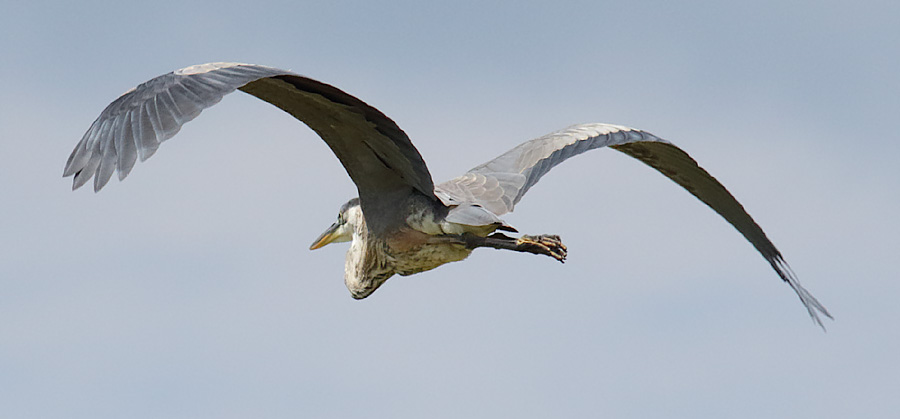
Great Blue Heron
A few minutes later, a Red-bellied Woodpecker carrying some food flew from the bushes along the river, and I followed it visually to the bog area. The woodpecker placed the meal in the top of a dead tree, and was soon joined by a fledgling begging to be fed.

Red-bellied Woodpeckers
In the evening, I was grilling dinner on our deck when Alice noticed an unusual bug on the deck railing. It was an assassin bug (wheel bug) that had caught a dragonfly off-guard. Assassin bugs use their long proboscis to inject a lethal saliva that liquefies the insides of their prey, which are then sucked out. The saliva contains enzymes that digest the tissues that they swallow. This process is called extraoral digestion. The saliva is effective at killing prey substantially larger than the bug itself. Look closely at the photos in this series. You can see the proboscis inserted in the dragonfly. The assassin bug certainly earns its name!
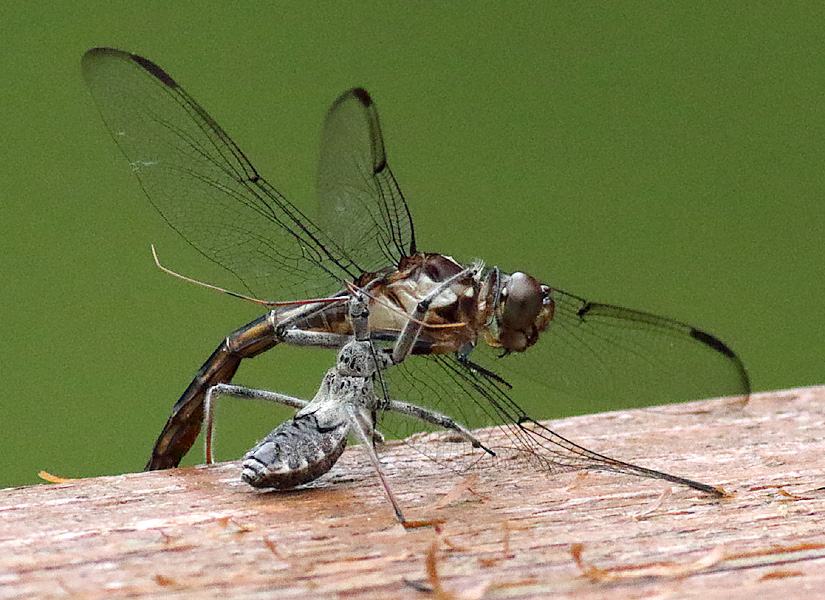
Asassin bug and dragonfly

Asassin bug and dragonfly

Asassin bug and dragonfly

Asassin bug and dragonfly
The rain returned later in the evening and I awoke to cloudy and dark skies. One of our juvenile Red-shouldered Hawks was in our yard, and I was able to get a few photos through a window.
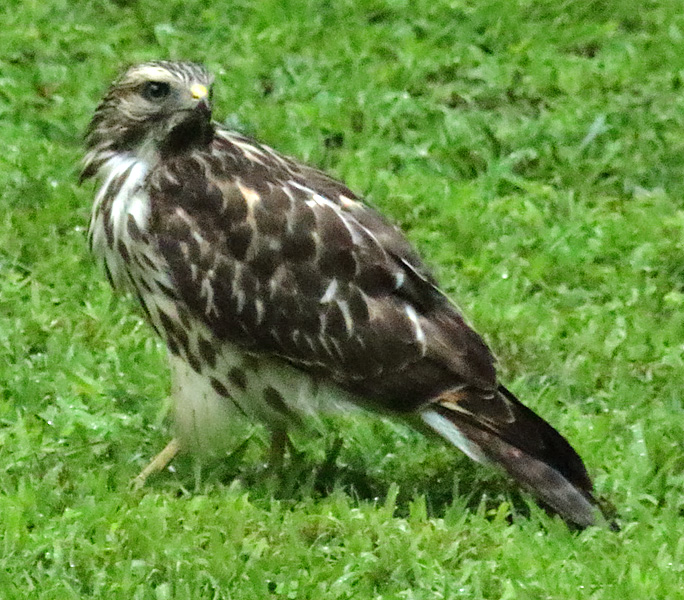
Juvenile Red-shouldered Hawk